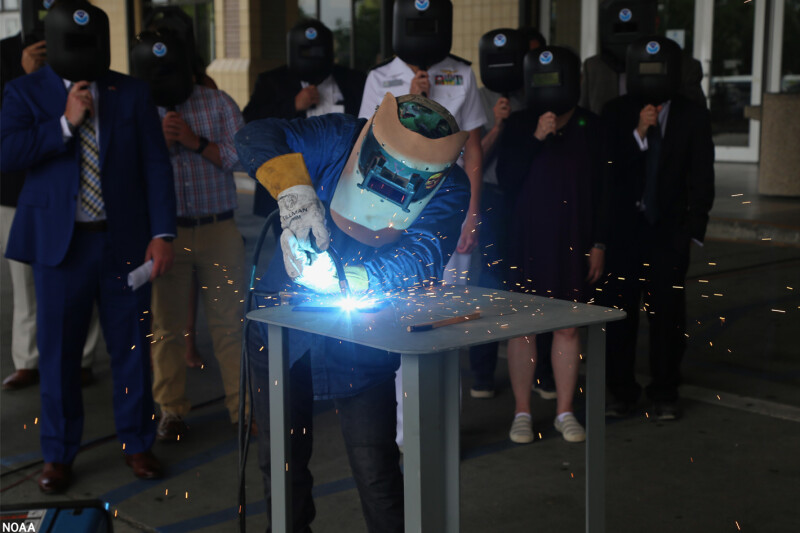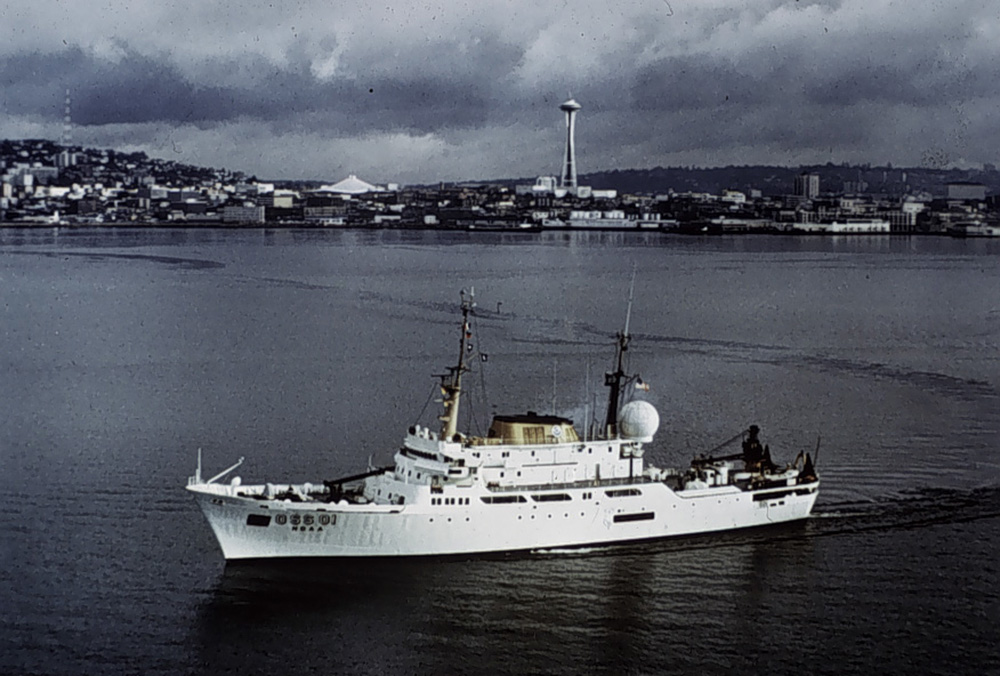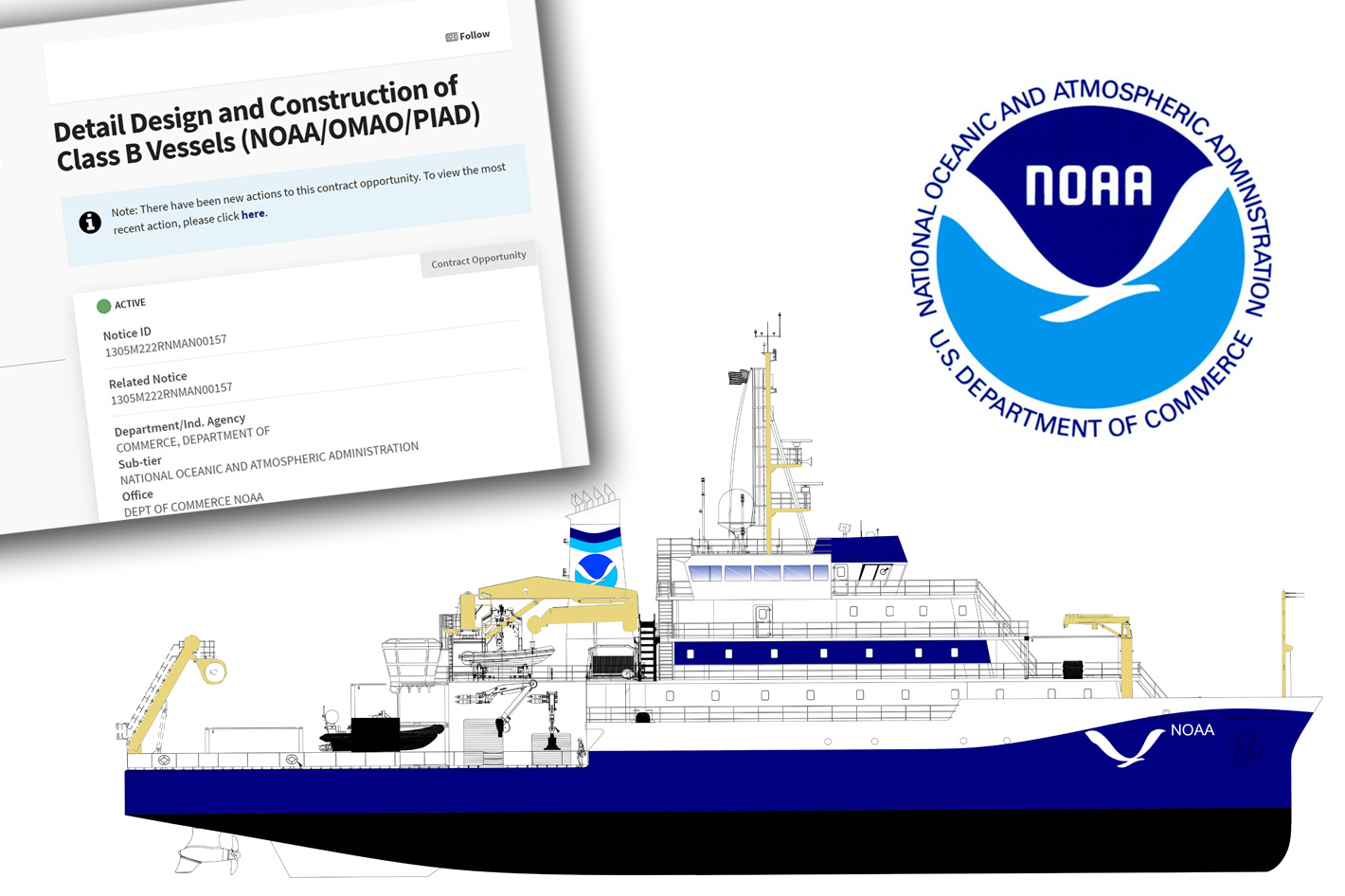A National Oceanographic and Atmosperic Administration request for proposals for design and construction of new ocean survey ships ends in August, but its next oceanographic research ship, Oceanographer, has already received the initials of the ship’s sponsor during a keel-laying ceremony.
NOAA is seeking design proposals from U.S. shipbuilders for the design and construction of new ships until Aug. 16. The new vessels will primarily support NOAA’s coastal, continental shelf and deep ocean data collection requirements.
The solicitation is for a firm, fixed-price contract for two vessels, with options for NOAA to purchase two additional vessels of the same design. The successful bidder will be responsible for both designing and building the new ships.
“NOAA ships play a vital role in supporting safe navigation, commerce, marine resource management and ocean exploration,” said NOAA Administrator Rick Spinrad. “Adding new, American-built ships to the NOAA fleet will dramatically increase our ability to provide data essential for protecting lives and livelihoods and strengthening the New Blue Economy.”
NOAA anticipates awarding the contract for this acquisition in 2023 and taking delivery of the first two vessels by 2027. The agency has not yet assigned a homeport for these new ships. This acquisition represents the second phase of NOAA’s ship fleet recapitalization effort.
Thoma-Sea Marine Constructors in Houma, Louisiana, is currently building two new oceanographic ships for NOAA, Oceanographer and Discoverer. Those vessels are expected to join the NOAA fleet in 2025 and 2026, respectively.
To support NOAA's goal of reducing the agency's carbon footprint, Oceanographer and its sister ship, Discoverer, will incorporate the latest technologies, including emissions controls and high-efficiency diesel engines that have potential to save 15,000 gallons per year for each vessel, resulting in an estimated reduction of approximately 5,700 tons of carbon dioxide.
“This efficiency is a success for the government, Thoma-Sea Marine Constructors and our planet, providing the lowest impact to the environment while studying the oceans we depend on,” said TMC Managing Director Walter Thomassie. “It is with much enthusiasm that we begin this phase of the project.”

"NOAA ships play a vital role in meeting the large and growing demand for oceanic data, critical for protecting lives and livelihoods," said NOAA administrator Rick Spinrad. "The new capabilities of Oceanographer will contribute to NOAA's sustained leadership in providing reliable, high-quality data to the nation, driving the New Blue Economy and doing so more efficiently than ever before."

The first Oceanographer
Oceanographer will continue the legacy of its namesake. The first Oceanographer served in the NOAA fleet from 1966 to 1996 and sailed throughout the world as it studied all aspects of oceanography. The new ship will support a wide variety of missions, ranging from general oceanographic research and exploration to marine life, climate and ocean ecosystem studies. These missions include shallow coastal, continental shelf and worldwide ocean survey and data collection.
Oceanographer will be homeported in Honolulu, Hawaii. The ship is expected to join the NOAA fleet in 2025, with Discoverer to follow in 2026.
“I am confident this new vessel will serve Hawaii and our country well,” said Linda Kwok Schatz.
The ceremony “marks a major step forward both in the construction of Oceanographer and the revitalization of NOAA’s ship fleet,” said Rear Adm. Nancy Hann, director of NOAA’s Office of Marine and Aviation Operations (OMAO) and the NOAA Commissioned Officer Corps. NOAA’s fleet of research and survey ships is operated, managed and maintained by OMAO. NOAA ships are crewed by NOAA Corps officers and civilian professional mariners.
Each year, NOAA ships collect data critical for nautical charts, sustainable fishery management, marine mammal protection, storm surge modeling, climate research and exploration of the nation’s 4.3-million-square-mile Exclusive Economic Zone.







